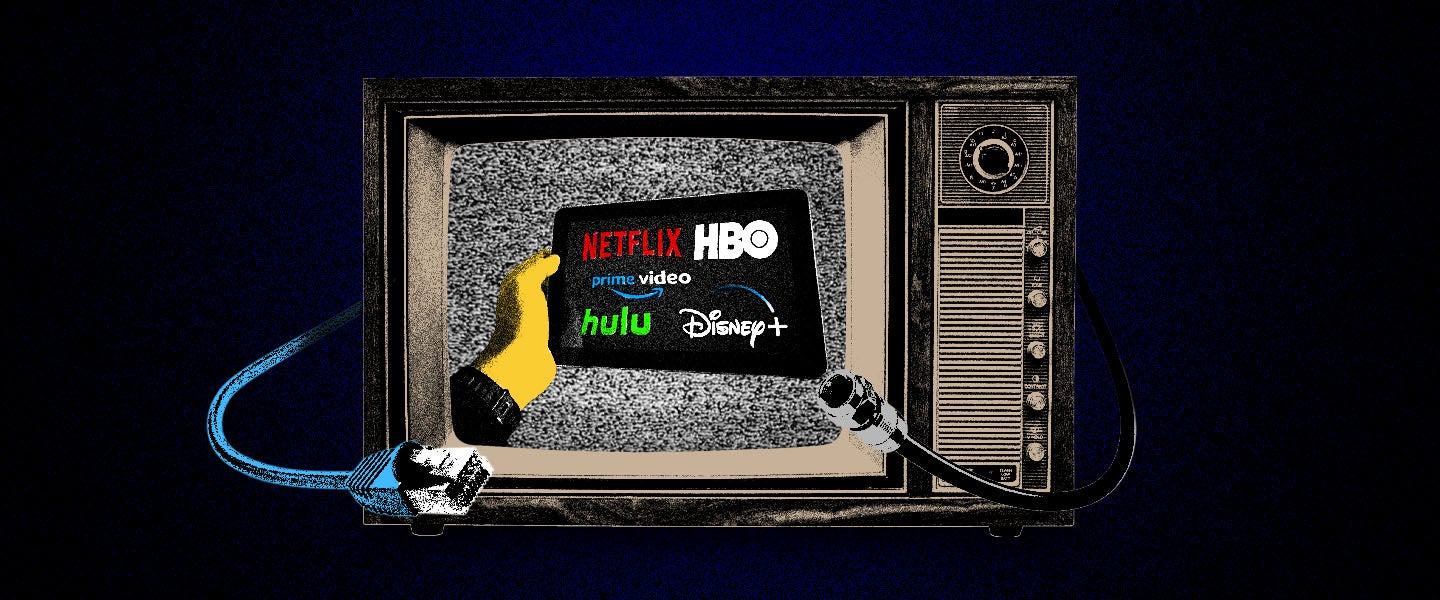Streaming won big at the 2019 Emmy Awards. Amazon Prime’s Fleabag and Netflix’s Ozark took home top acting, directing and writing awards. It’s a reminder that streaming is now the place for the best TV has to offer.
It’s also why we’re about to be bombarded with far too many streaming options. Within the next year, Disney, NBC, HBO and Apple will all release their own streaming services — on top of current options like CBS All Access and BET+. Streaming options were supposed to make it easier and cheaper for us to cut the cord and ditch cable. But now the costs are adding up.
In 2019 and 2020, choosing the best combination of viewing options is about as complex as apartment hunting in NYC. You’ll have to decide if you want live TV, access to sports events or old episodes of The Office. Then, factor in your already existing accounts and the likelihood your college buddy is still going to let you use her grandpa’s Amazon Prime account to watch Goliath. It’s overwhelming!
To help, I’ve attempted a mathematical analysis of how much it’d cost to pay for every major streaming service. For the sake of simplicity — math isn’t my subject — I’m using the cheapest streaming plans for each service. Going for the most expensive option will inevitably give you duplicate subscriptions of Showtime. And, honestly, Ray Donovan isn’t worth it.
What’s more, I found it’s more economical to go with year-long plans and not to mess with live TV just yet. If we’re gonna fork over our change for HBO MAX in a few months, we’ve gotta minimize our costs now.
The Cost of Content
Here are standard plans for each major and up-and-running streaming service:
- Cost: $5.99 per month ($71.88 a year)
- Cost: $59.99 per year with commercials
- Cost: $119 a year through Prime subscription
- Cost: $12.99 per month. (The basic $8.99 comes without HD. So let’s splurge for the standard plan and pay $155.88 per year.)
- Cost: $4.99 per month ($59.88 per year)
- Cost: $69.99 per year. (The $12.99-per-month bundle is more expensive and doesn’t start until November 12, but it offers ESPN+ for sports fans.)
- Cost: $9.99 per month ($119.88 per year)
The total: Approximately $656.50 a year. Yes, that’s expensive and only the starting number. But is it cheaper than cable? Most of the time.
Cut Your Losses — And the Cord
- Dish Network’s basic cable package — with Showtime, Starz and over 230 more channels — is $79.99 per month, which comes out to approximately $959.88 a year.
- DirecTV offers HBO, Cinemax, Showtime, Starz and EPIX, as well as NFL Sunday football, for $74.99 a month or $899.88 a year.
Basic streaming is still a better starting option. Few cable providers offer any streaming perks.
The Most Cost-Effective Solution for Most People
Cut the cord and consider upgrading to a streaming service with limited live TV and cable channels, such as Sling or YouTube TV. Hulu with live TV and commercials is $44.99 per month, or $539.88 per year. This option gives you access to more than 60 channels, including live sports and news.
Prioritize Your Shows
Hulu with live TV ($539.88) plus all major streaming services is $1,124.50. This option sounds expensive, but it’s only $164.62 more than the basic Dish Network package that doesn’t come with any streaming options. If you want to break even, decide which streaming services to cut back on. If the goal is simply to watch The Office reruns, hold the cable subscription and snag Netflix for all your vintage sitcom needs.
So what’s the takeaway? You’re gonna have to pay if you want content, and going a la carte still offers you more freedom and flexibility. Just think: Even after you’ve signed up for a plan, you still don’t know how much NBC’s Peacock and HBO MAX will cost. Peak TV is great — but not when it’s running us dry.

